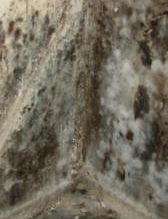 |
| Hospitals can become more environmentally friendly. |
As part of their continued effort to “go green”, the hospital pledged to reduce air pollution, use less plastic, increase recycling efforts and initiate other environmentally friendly practices.
They plan to reduce energy consumption by 10 percent, install water-conserving equipment, complete a roof garden and more.
The hospital’s women’s and children’s buildings already boast a green design, top-notch energy system and non-toxic cleaning products.
In order to improve indoor air quality, the hospital is planning to install a “living wall” with more than 30 plant species that help clean the air and break down indoor air pollutants.
According to the North Jersey Record, the EPA has developed partnerships to aid hospitals, colleges, retail and other businesses in becoming more environmentally friendly, because buildings are responsible for 40 percent of the nation’s energy consumption and 40 percent of carbon dioxide emissions.
Source: North Jersey Record
Air cleaners for hospitals and healthcare settings
The indoor air quality in hospitals and healthcare facilities is often compromised by a wide range of indoor air pollutants, including bacteria, viruses, chemicals, volatile organic compounds, dust, particles, mold and more.
Electrocorp offers powerful air cleaners for hospitals and healthcare facilities that can remove these contaminants on a 24/7-basis.
The air cleaners feature many pounds of granular activated carbon for gaseous pollutants and odors, a HEPA filter for particles and dust and optional UV germicidal filtration for the neutralization of bacteria, viruses and mold.
For more information and options, contact Electrocorp.

























